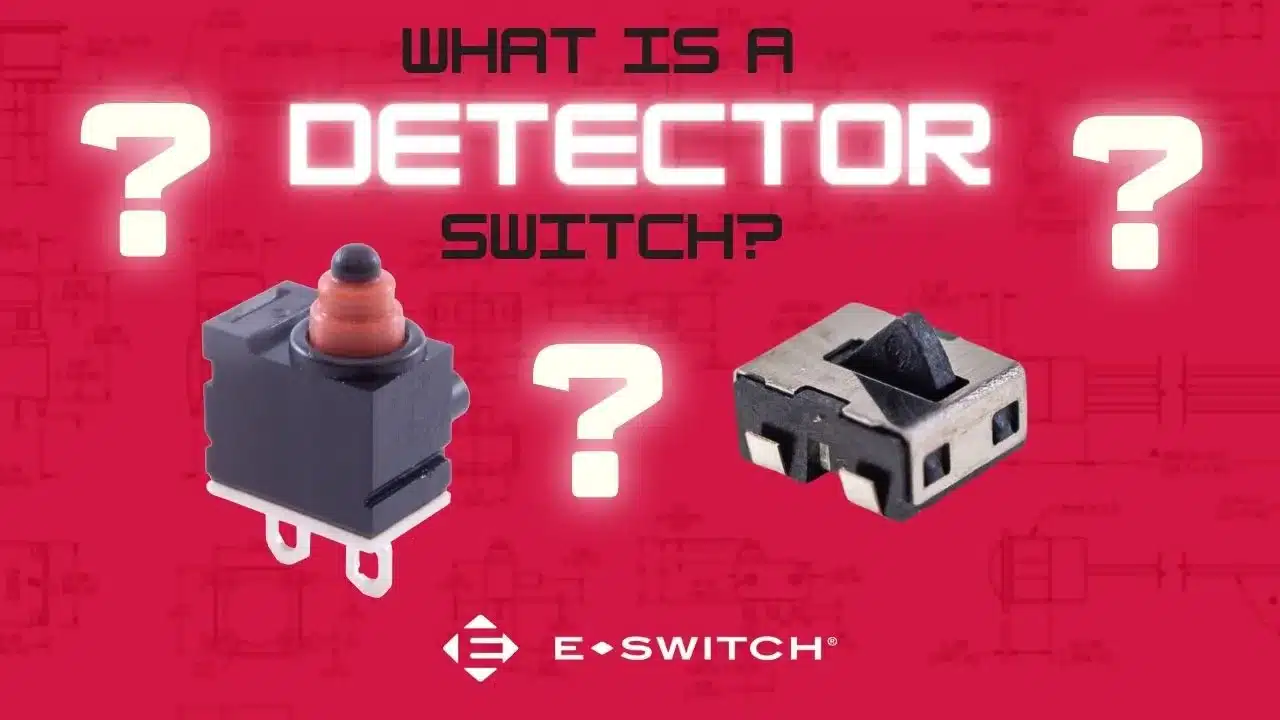What are Detector Switches?
A detector switch typically refers to a switch that’s used to detect the presence or absence of an object, or to sense a particular condition. These switches are commonly employed in various applications such as industrial automation, security systems and electronic devices where the detection of a specific state or object is necessary.
How do They Work?
The basic working principle of a detector switch involves the mechanical movement of components inside the switch in response to an external stimulus. There are different types of detector switches, and their operation may vary based on the specific design and application. Here are a few common types:
- Limit Switches: These are often used to detect the presence or position of an object. Limit switches consist of an actuator that’s mechanically engaged by the movement of an object, causing the switch contacts to change state. They’re commonly used in industrial applications to control machinery and equipment.
- Proximity Switches: These are use various technologies, such as inductive, capacitive or photoelectric sensing, to detect the presence or absence of an object without direct physical contact. These switches are often used in applications where non-contact sensing is preferred, or in environments where physical contact may not be practical.
- Pressure Switches: Pressure switches detect changes in pressure and are commonly used in fluid systems. When the pressure crosses a certain threshold, the switch activates or deactivates, signaling the change in pressure.
- Motion Sensors: These detectors use various technologies, including infrared, ultrasonic or microwave, to sense motion. Motion sensor switches are often used in lighting control systems and security applications.
The specific operation of a detector switch depends on its type and technology. For example, in a limit switch, the movement of an actuator might physically open or close electrical contacts. In a proximity switch, changes in the field (inductive, capacitive or optical) are used to trigger the switch without direct contact.
Pros & Cons
Pros
Non-Contact Sensing: Many detector switches operate without direct physical contact with the object being sensed. This non-contact sensing is advantageous in applications where physical contact could be detrimental or impractical.
Versatility: They come in various types, such as limit switches, proximity switches, motion sensors and pressure switches, each designed for specific applications. This versatility allows for a wide range of uses across different industries.
Automation: They play a crucial role in automation by enabling the automatic control of processes and machinery based on the detection of specific conditions or objects. This contributes to increased efficiency and reduced human intervention.
Long Lifespan: Many detector switches can have a long operational lifespan. Solid-state detectors, in particular, can offer extended reliability without the wear and tear associated with moving parts.
Precision: Some switches, especially those using advanced sensing technologies like laser or infrared, can provide precise and accurate detection, making them suitable for applications where high precision is essential.
Cons
Complexity: Some types of switches, such as those employing complex electronic sensing technologies, can be more intricate and challenging to understand, troubleshoot or maintain compared to simpler electromechanical switches.
Sensitivity to Environmental Conditions: Certain detector switches, especially those relying on optical or capacitive sensing, can be sensitive to environmental conditions such as dust, humidity or temperature variations, potentially affecting their performance.
False Triggers: In some situations, detector switches may be prone to false triggers caused by interference from external factors, leading to unintended activations or deactivations. This is particularly true in environments with high levels of electrical noise.
Power Consumption: Some detector switches, especially those with electronic components, may consume more power than simpler electromechanical switches. This can be a consideration in battery-powered or energy-efficient applications.
Limited Range: Certain proximity switches may have limitations in the distance over which they can reliably detect objects. The range of detection is a crucial factor to consider depending on the application requirements.
Common Uses
- Consumer electronics
- Telecommunications
- Networking
- Security devices
- Vending machines
- HVAC
- Industrial controls
- Medical equipment
- Computers/servers
- Performance audio
- Instrumentation
- Appliances
- External hard drives and modems
- Kiosks
- Slot machines and gaming equipment
E-Switch Detector Switch Offerings
E-Switch has the largest selection of detector switches on the market with the following lineup: the 900 Series (subminiature, right angle), MR1000 Series (recessed magnetic or reed type), PP1 Series (push-pull pushbutton), PP2 Series (push-pull pushbutton), TD1146 Series (SMT ultraminiature), TD1150 Series (sealed, IP65), TD1250 Series (long life, sealed, IP67) and TD4700 Series (ultraminiature).
